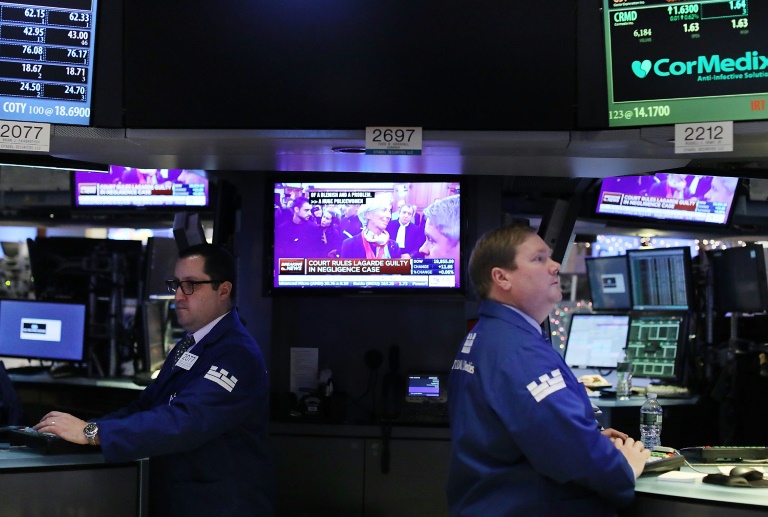A shift in market sentiment leading to a short squeeze can result in high losses for investors selling a stock. Sometimes a stock’s price action is determined by investors’ sentiment rather than the company’s fundamentals.
A short squeeze occurs when an unexpected rise in the stock’s price makes numerous short sellers jittery. To avoid losses, short sellers exit positions by buying the stock, resulting in the price rising higher.
Benzinga details how a short squeeze works, why it happens and the factors investors need to consider to minimize the risks of falling into the short squeeze trap.
Short Squeeze
A short squeeze happens when traders who sold shares short must buy them back as prices rise. This often starts with good news or strong demand for the stock. As prices go up, short sellers cover their positions to limit losses. Their buying increases demand, pushing prices even higher. Short sellers face big risks, including potential infinite losses since stock prices can rise indefinitely. If prices jump sharply, lenders may issue a margin call. This requires short sellers to put up more money or sell at bad prices. High short interest can worsen a short squeeze. When many shares are sold short, small price rises can lead to a wave of buying by short sellers. This amplifies the price surge and increases volatility. Therefore, knowing about short interest is important for spotting potential short squeezes.
How Does a Short Squeeze Work?
Opening a short position means that you borrow shares of an asset you believe will decrease in value from a broker. You then sell the borrowed shares to an investor. When the price falls, you buy the shares from the open market and deliver them to the original owner to profit from the difference because the buy price is lower than the price you sold at.
Sellers make a loss when they buy shares at a higher price than their sell position. That happens when the price rises, instead of falling as traders expected.
A short squeeze starts when a company’s stock appeared to be in a downtrend (lower prices forming because of loss of value). Numerous traders open a sell position, believing they will profit from the falling price.
Although a stock’s price action suggests it will lose more value, a fundamental factor such as a better-than-expected earnings report is released and causes a price reversal. The stock’s price rises.
Not wanting to buy the shares at a higher price than the sell price, a small group of investors buys shares to close their positions. A larger group of investors notice that the price is rising and that some investors have closed their positions. They panic and then buy shares to close their positions to avoid losses.
Sellers closing their positions means they have bought the stock. The increased demand for the stock drives the price up further and a shift in the market occurs, making numerous traders believe that the stock is surging. To avoid missing out on profits, more traders buy the stock.
Why Short Squeezes Occur
A short squeeze happens when a heavily shorted stock suddenly rises in price. This usually occurs due to unexpected positive news or increased demand for the stock. Short sellers are forced to buy shares to cover their losses, which pushes the price even higher. This can create a chain reaction. Understanding short squeezes offers insights into market dynamics and investor behavior. Factors like market psychology and supply and demand are involved. Exploring these reasons can help investors navigate the stock market better.
High Short Interest
A short squeeze can occur when a stock has high short interest. This indicates that many shares have been sold short by investors who are betting against the stock. High short interest means that investors expect the stock’s price to fall. If the stock’s price starts rising instead, short sellers may need to buy back shares to limit their losses. This increase in demand can push the stock price up further. This situation creates a feedback loop. As the price rises, more short sellers are compelled to cover their positions, which drives the price even higher. This can lead to a rapid increase in the stock’s value.
Positive News or Events
Short squeezes can occur due to unexpected positive news about a company or the market. For instance, if a company reports higher-than-expected earnings or announces a new partnership, investor sentiment can quickly change. This shift may lead to increased buying activity, pushing the stock price up. As prices rise, short sellers may rush to close their positions to minimize losses. This reaction can further drive the stock price higher. The mix between positive news and short covering can result in a significant spike in stock prices.
Low Float
Stocks with a low float have a small number of shares available for trading. They are more vulnerable to short squeezes. When buying demand for a low float stock increases, it can cause dramatic price changes. This happens because there are fewer shares available. Each purchase impacts the stock’s price more significantly. If investors start buying the stock, the limited supply can lead to sharp price increases. This situation may force short sellers to quickly cover their positions to minimize losses. As the price rises, more short sellers may exit their positions, which further drives up the stock price and intensifies the squeeze.
Things to Consider With a Short Squeeze
Not all stocks that have slightly risen in value after falling prices are in a short squeeze. Traders should analyze the key factors to determine if the price is reversing.
Short Interest
Short interest helps traders gauge speculative stocks. It’s the total number of shares sold of the total shares outstanding, expressed as a percentage. Stable companies usually have a lower short interest than ones with speculative stocks. A sudden shift from a stock’s regular short interest could mean a shift in market sentiment.
Multiple Factors
When doing analysis, traders should strive for confluence — combining several strategies to determine the same outcome. Traders wishing to profit from a short squeeze shouldn’t rely only on short interest or another single indicator; they should combine several fundamental and technical factors to determine if a short squeeze is likely to occur.
What About Naked Short Selling?
The legal way to short a stock is by borrowing shares you don’t have to open a short position. Naked short selling is illegal because traders don’t borrow shares before opening a short position. It can happen because of discrepancies between paper and electronic trading.
The naked short seller sells shares not owned or confirmed to exist. The risk of naked short selling is failure to deliver. Because shares aren’t borrowed, a naked seller may fail to deliver the shares to the buyer if shares aren’t available when required to cover or close a position.
A Risky Situation
A short squeeze is a risky situation for investors selling a stock. When the share price unexpectedly rises, it triggers short sellers to rush to exit their positions, leading to even higher stock prices. Traders need to analyze key factors and exercise caution to navigate this situation wisely and minimize risks in the stock market.
Compare the Best Online Brokers for Short Selling
Being a seller in a short squeeze means that you need a broker to protect your position. Benzinga found the best online brokers enabling you to protect your account.
Frequently Asked Questions
A
In a short squeeze, the stock price rapidly rises as short sellers rush to cover their positions, leading to increased buying pressure and further price spikes.
A
To anticipate a short squeeze, watch for a high short interest ratio and positive news that could trigger buying, along with a low float that amplifies price movements.
A
The best indicator for a potential short squeeze is a high short interest ratio, typically above 10%, indicating many shares are sold short relative to trading volume.







